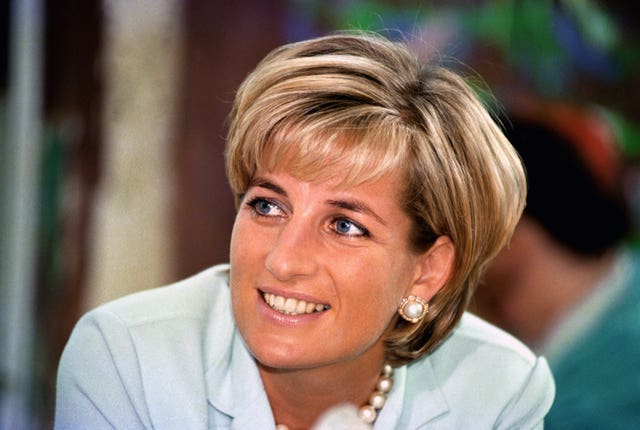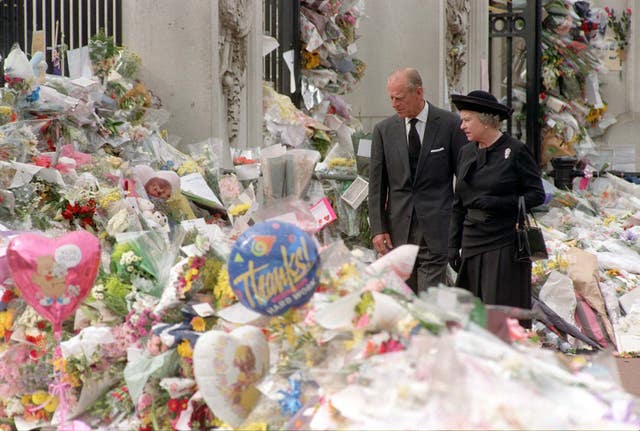
When the Prince of Wales married Lady Diana Spencer, the Queen was so delighted she did a jig as she left their wedding reception.
Little was she to know the impact the Princess of Wales would have on the nation and the House of Windsor, and the tragic fate that awaited Charles’s new bride.
The fairytale wedding seemed a world away when the War of the Waleses ravaged the royal family’s reputation.

Diana brought a modernity and glamour to the royal family, and was the mother of Princes William and Harry, now the Duke of Cambridge and the Duke of Sussex.
She was known for her compassion, went on to champion causes such as the fight against landmines and changed attitudes to those diagnosed with HIV and Aids, bringing a more touchy-feely approach to royal engagements.
But even in the early days, Charles and Diana’s marriage did not go smoothly.
The princess was paranoid about her husband’s relationship with Camilla Parker Bowles, and in later years was proved right.
She also suffered bulimia and threw herself down the stairs while pregnant with Prince William.
The shocking revelations emerged in Andrew Morton’s book Diana: Her True Story – a work with which the princess had herself collaborated.
Diana’s actions in going public left the royals without much sympathy for her.
The Queen is said to have cared for the princess, but found her behaviour difficult to comprehend, while Diana once admitted she longed to get inside her mother-in-law’s mind.
It was not the end of royal secrets being played out on a public stage.

Also in 1992 came the “Squidgygate” tapes with James Gilbey where Diana called her marriage “torture” and referred to the royals in less than pleasant terms.
It was then announced that the Waleses were to separate.
In his television interview with Jonathan Dimbleby in 1994, Charles admitted he had been unfaithful.
Then came the princess’s hammer blow – her appearance on Panorama.
Diana kept the TV interview with journalist Martin Bashir a secret from the Queen until just before it was aired.
She told the nation there were three people in her marriage, aired her own doubts over whether Charles would be king and admitted committing adultery herself.

Decades later, an inquiry found Bashir engaged in “deceitful behaviour” to secure the world exclusive, faking bank statements which suggested individuals were being paid to keep the princess under surveillance.
Soon after the broadcast in 1995, the Queen wrote to both Charles and Diana, advising them to divorce.
They did so in 1996 and Diana was stripped of her HRH title.
A year later, she was dead.
She was killed suddenly in a car crash on August 31 1997, with her lover Dodi Fayed, in Paris, after being pursued by the paparazzi.
As the Queen stayed with grief-stricken William and Harry at Balmoral, the public became increasingly frustrated that the monarch had not made an appearance.
The newspaper headlines screamed: “Show us you care”.

As a mark of respect, the Queen was advised to and relented by flying the Union flag at half-mast over Buckingham Palace for the first time.
Six days after Diana died, the Queen addressed the nation on television.
“We have all been trying in our different ways to cope,” she said.
“It is not easy to express a sense of loss, since the initial shock is often succeeded by a mixture of other feelings: disbelief, incomprehension, anger – and concern for those who remain. We have all felt those emotions in these last few days. So what I say to you now, as your Queen and as a grandmother, I say from my heart.”
She paid tribute to Diana, calling her an “exceptional and gifted human being”, adding that she admired and respected her.
The next day as the funeral cortege passed the palace, the Queen bowed her head.
In the summer of 2004 almost seven years after Diana died, the Queen appeared to heal the rift with the princess’s “blood family” as she opened the Hyde Park fountain built in her memory.
It was the Spencers’ and the Windsors’ first public appearance together since the funeral where Diana’s brother, Earl Spencer, launched his famous attack on the royal establishment.

The Queen paid tribute to Diana’s ability “not only to touch people’s lives but to change them”.
She admitted: “Of course there were difficult times, but memories mellow with the passing of the years. I remember especially the happiness she gave to my two grandsons.”


Comments: Our rules
We want our comments to be a lively and valuable part of our community - a place where readers can debate and engage with the most important local issues. The ability to comment on our stories is a privilege, not a right, however, and that privilege may be withdrawn if it is abused or misused.
Please report any comments that break our rules.
Read the rules here